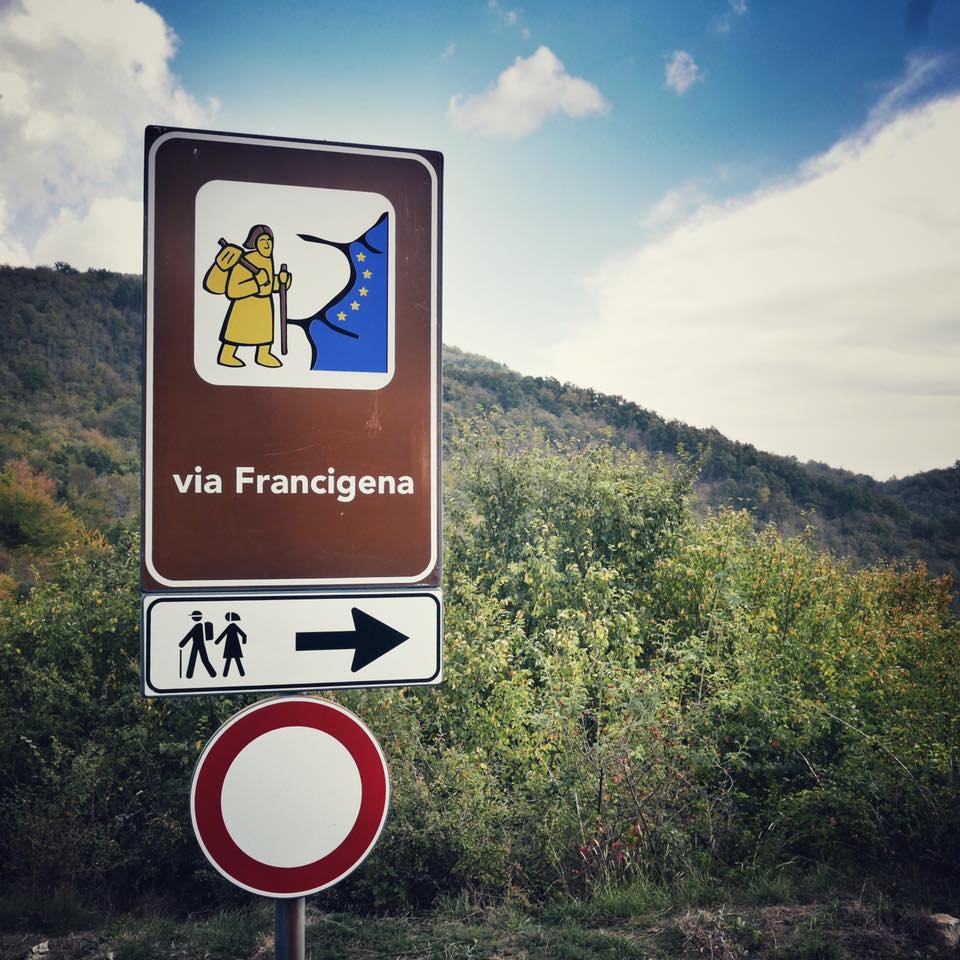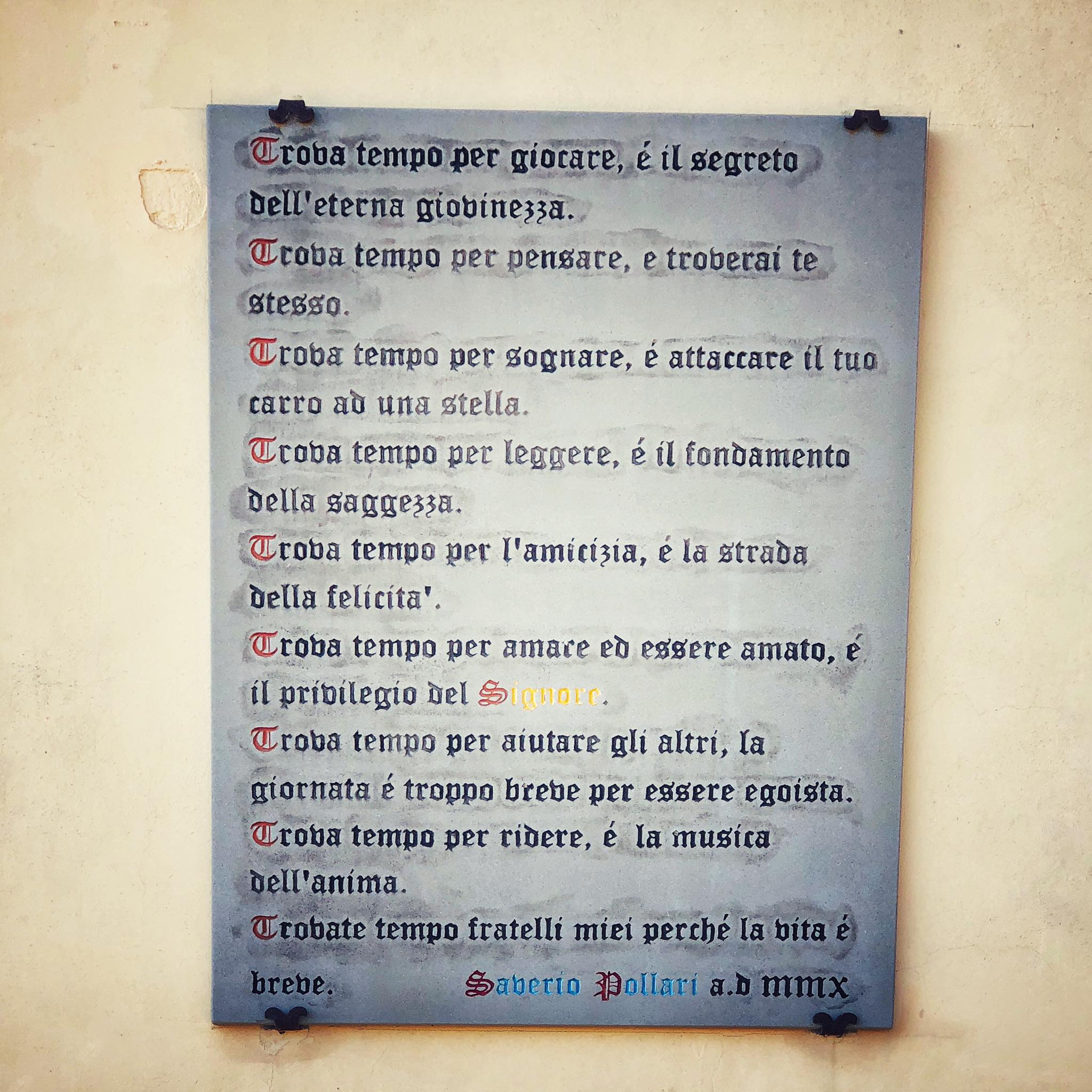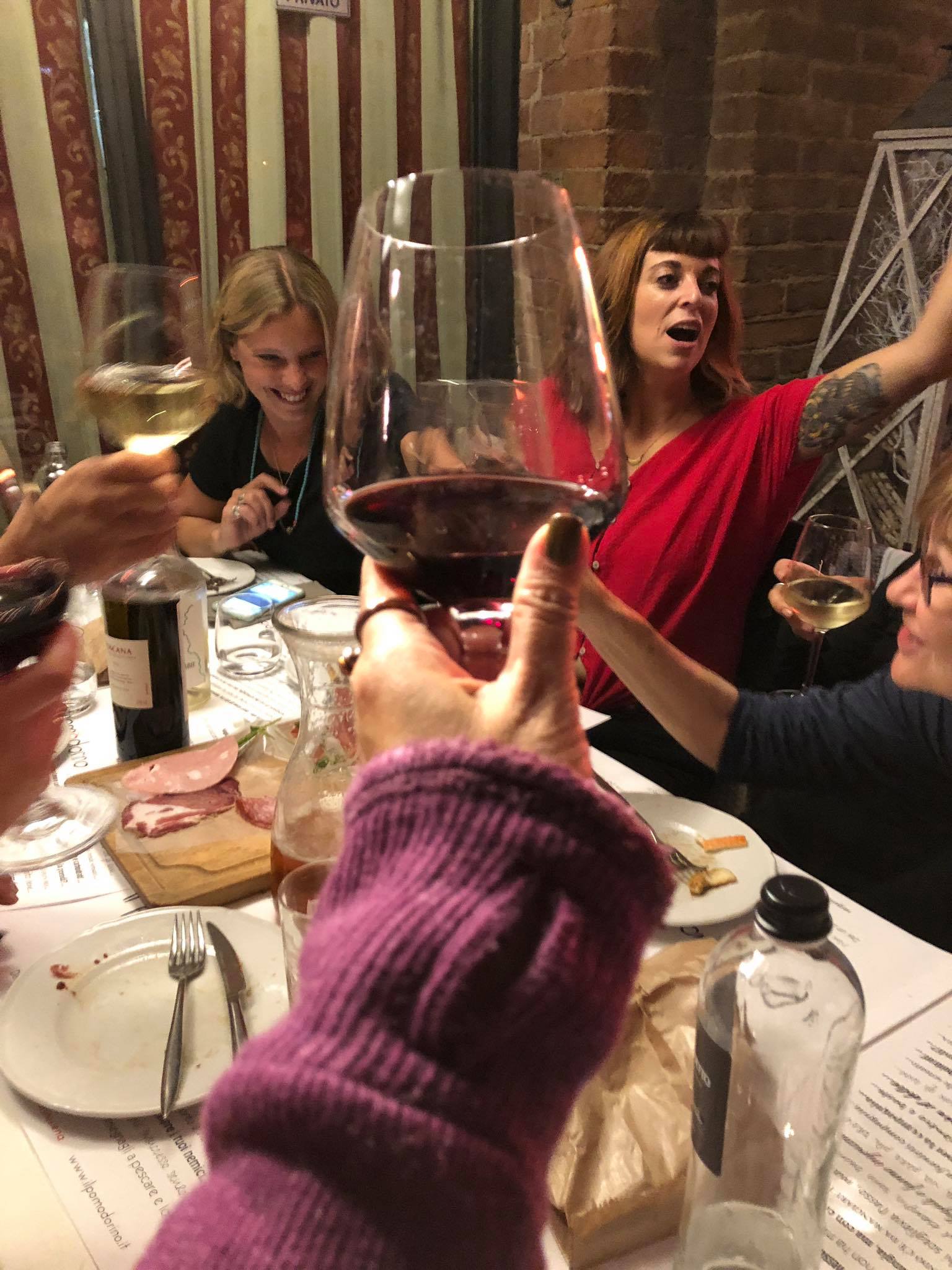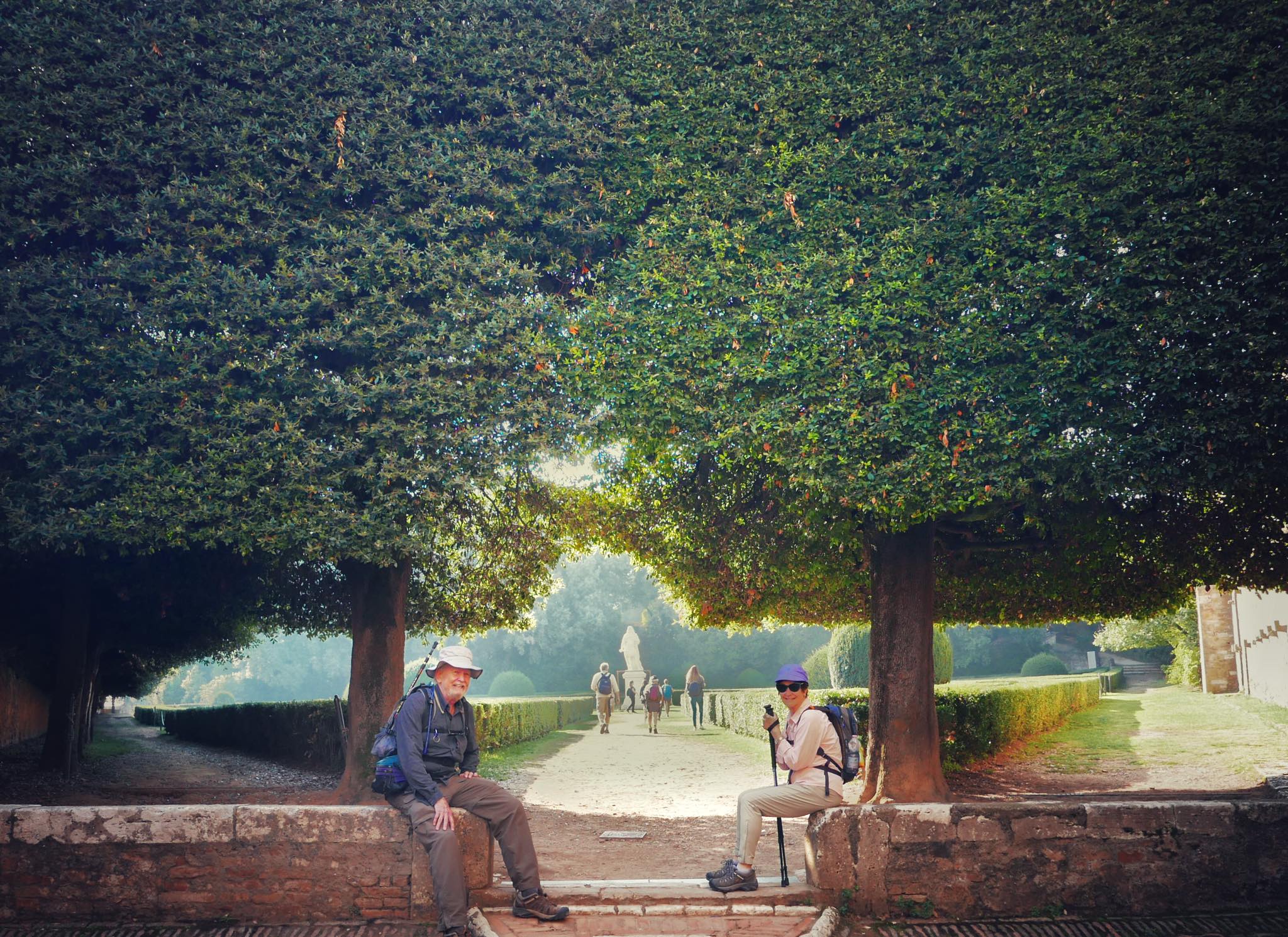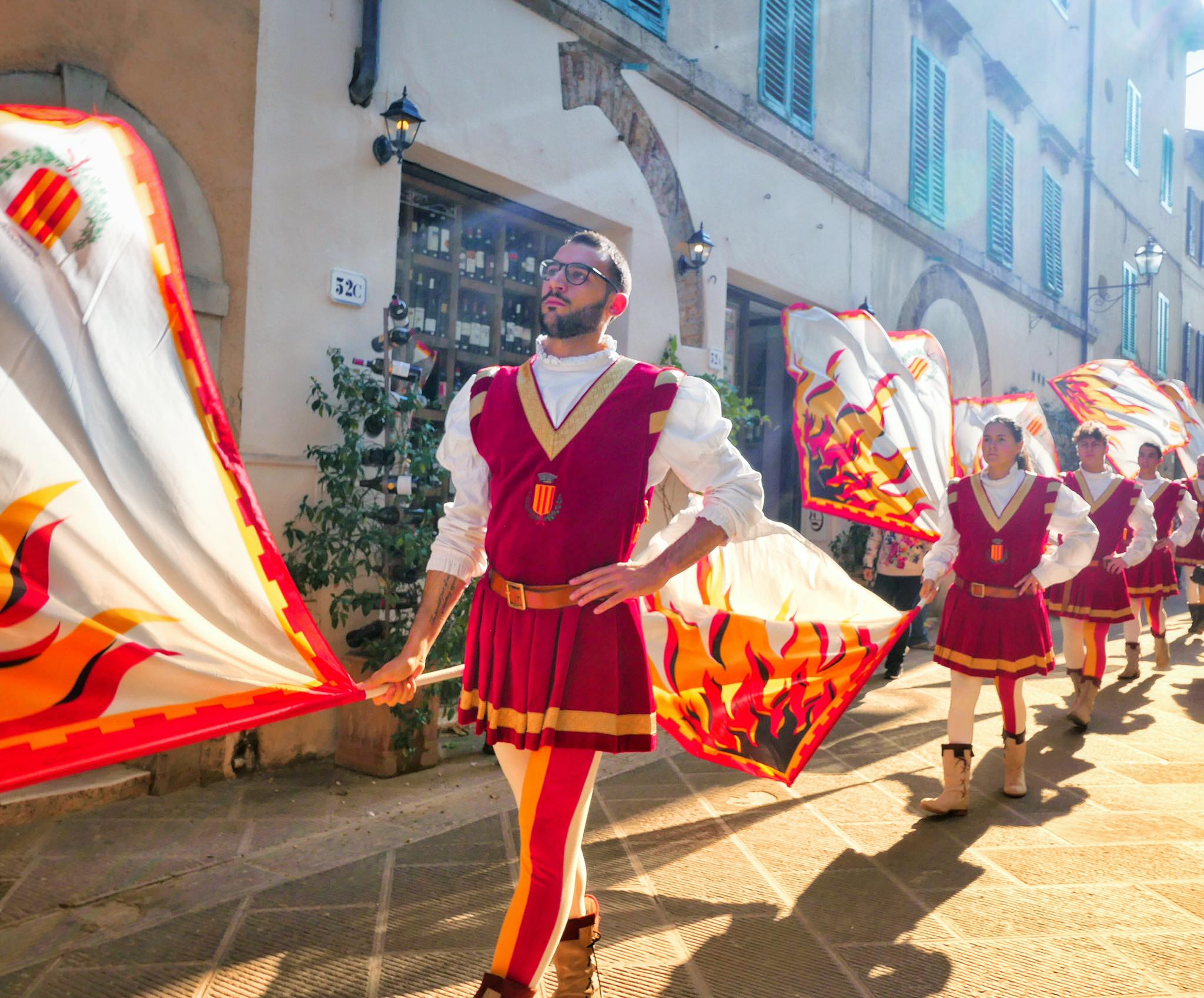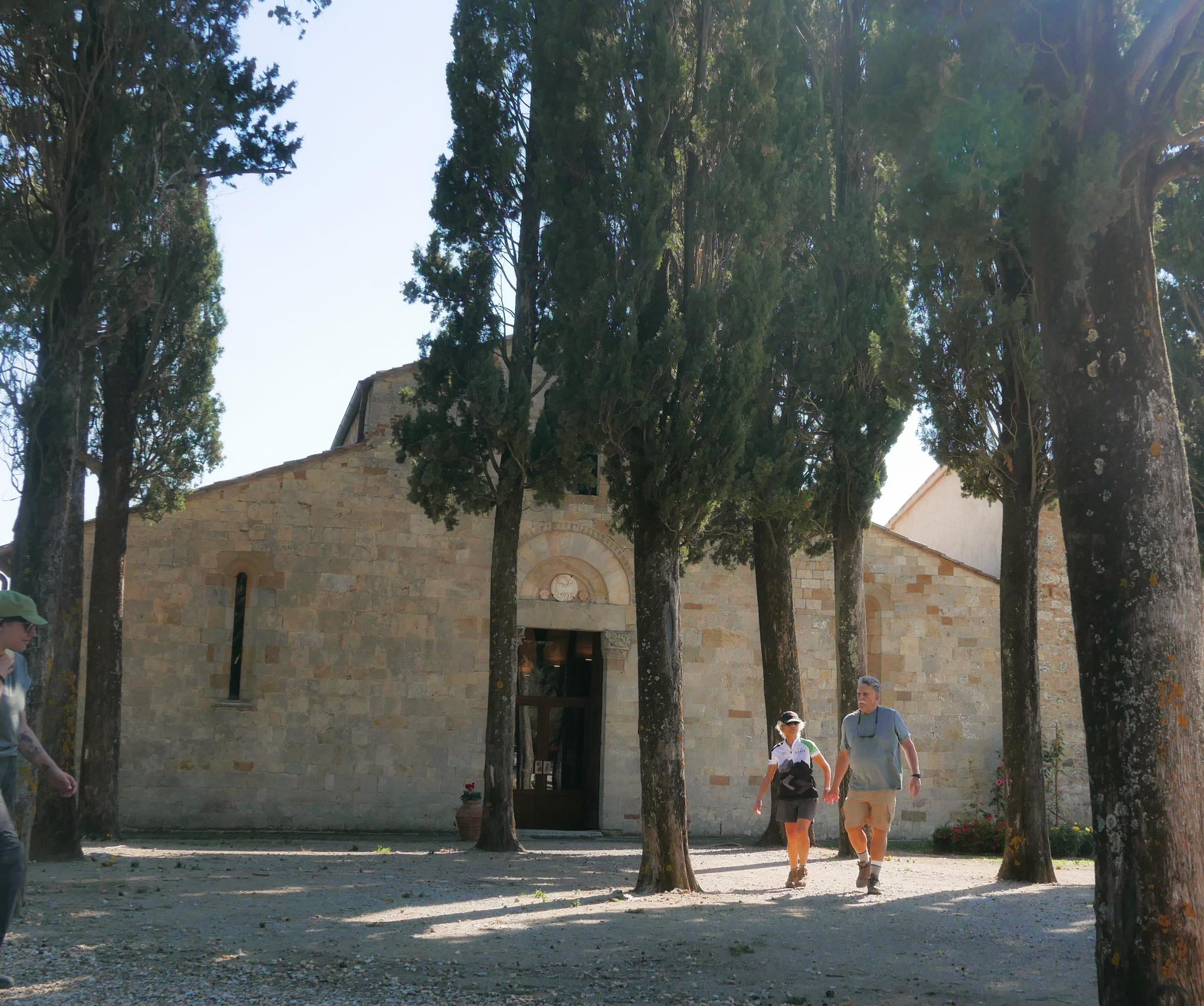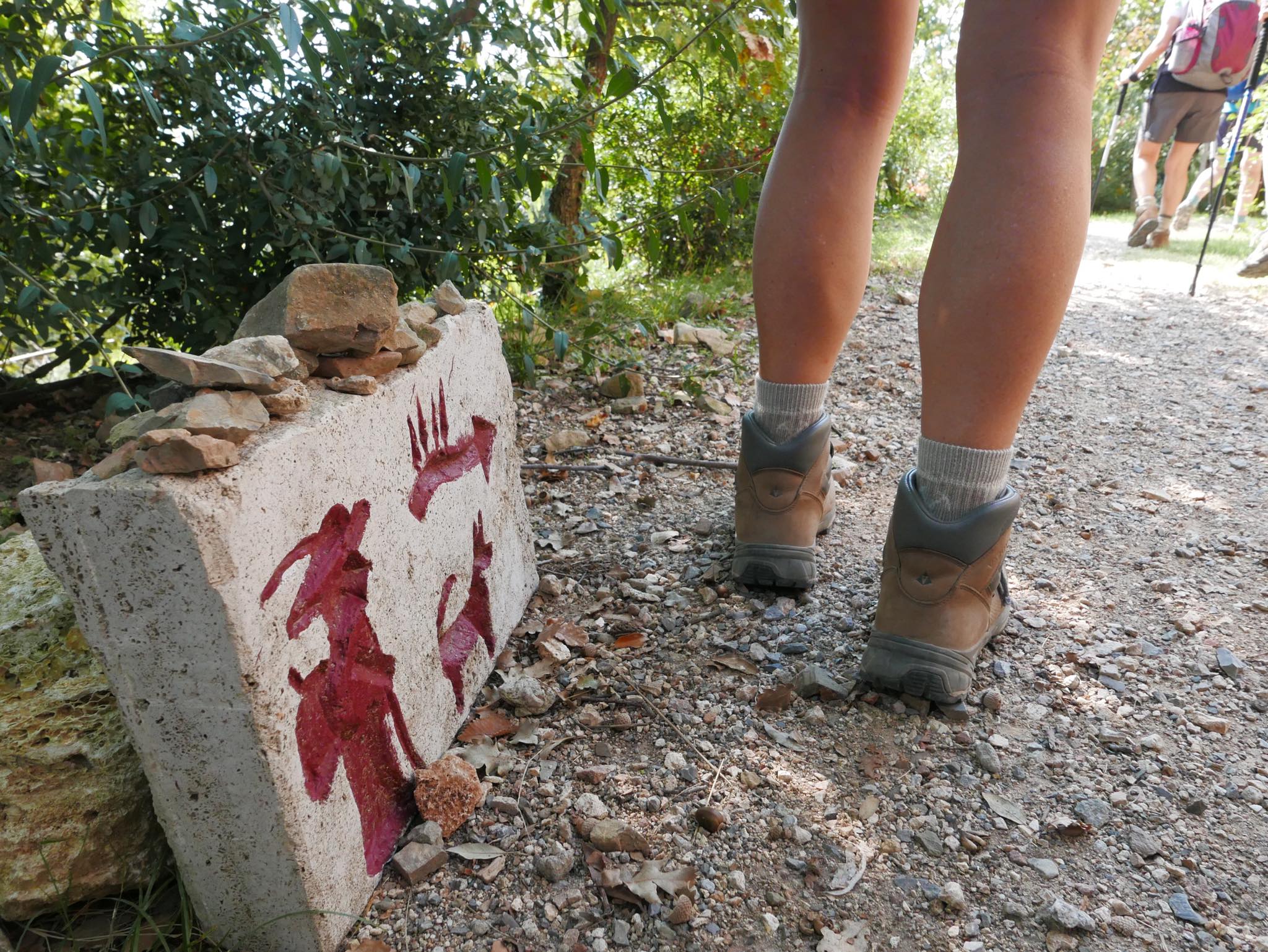Scrapbook: The Secret Side of Tuscany
/The world knows Florence and Pisa, but there’s more to Italy’s vaunted central region than Michelangelo’s David and the leaning tower. Leave the icons and crowds behind for a host of smaller spa cities and art towns and medieval villages, from Montecatini Terme to Pietrasanta to Filattiera. And the best way to see these places is on foot. The thousand-year-old Via Francigena pilgrimage route runs through here, passing through towns, vineyards, and even Dante’s “selva oscura.”
Buongiorno, Toscana. In the spa town of Montecatini Terme, northwest of Florence. Watch this space: I’m exploring the secret side of Tuscany, and you’re coming with me.
Buona sera, Toscana. Come evening, this elegant town drips with romance, its Belle Epoque architecture built around rich mineral waters. Montecatini Terme, Italy.
Hope you’re up for a 6.8-mile hike through the Lunigiana, in northern Tuscany, at the foothills of the Apenines. (It’s not difficult with the guidance of tour operator S-Cape Travel.) Over the next few days we’ll be doing portions of the Via Francigena, an ancient pilgrimage trail that for a thousand years has led the faithful from Canterbury (in England) to Rome. Today we pass through medieval bridges, sleepy hamlets, and small farms. There’s also gold in these hills, or what locals call white gold—the world-famous Carrara marble. What we don’t see many of: tourists.
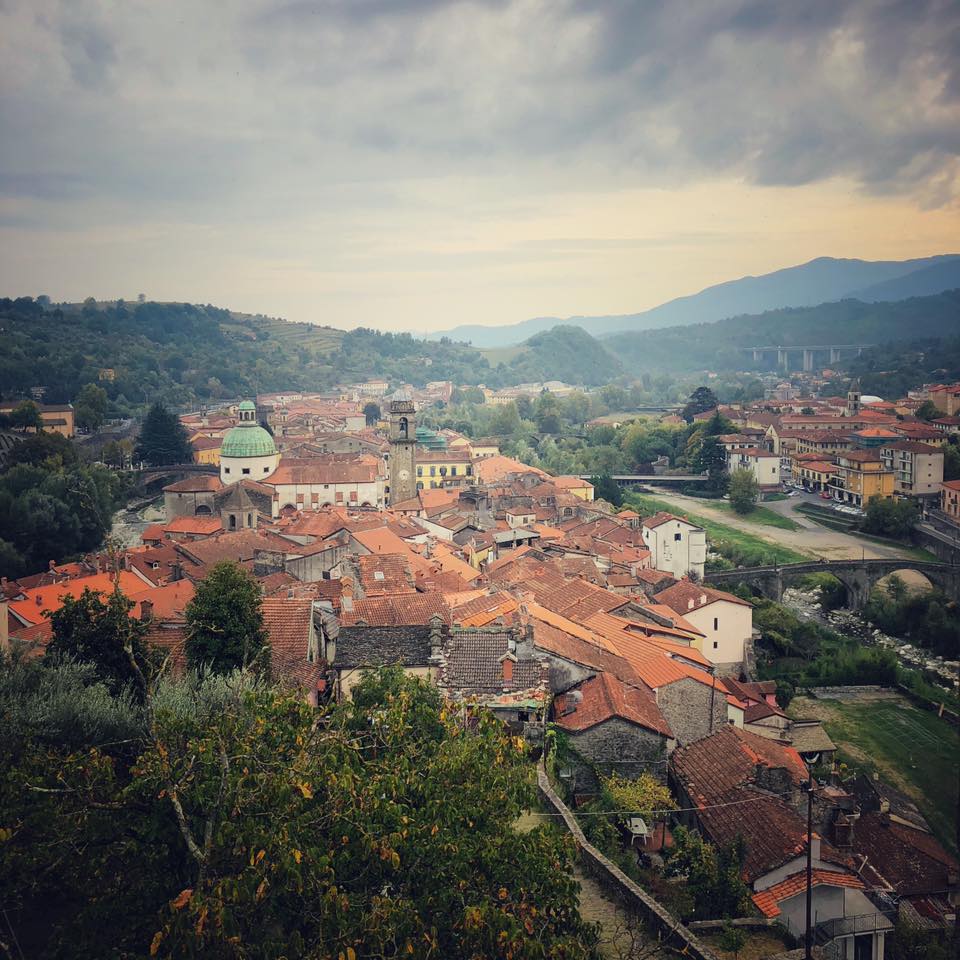
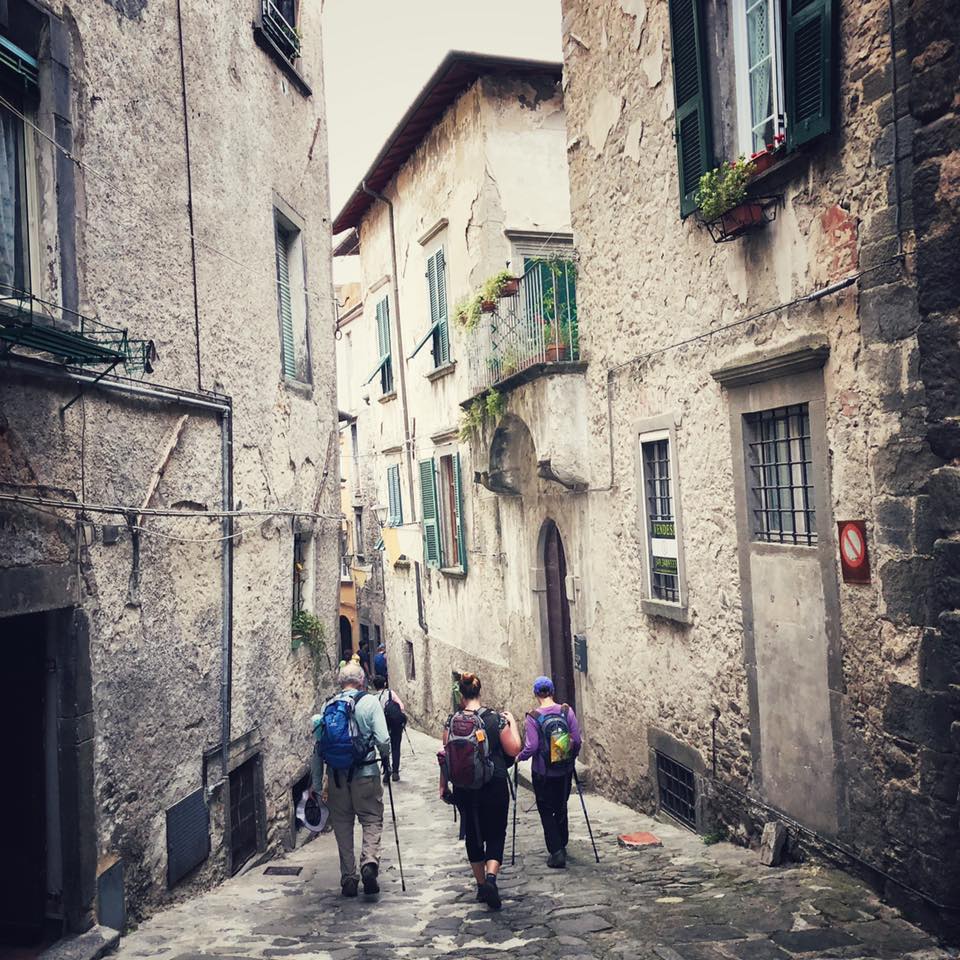
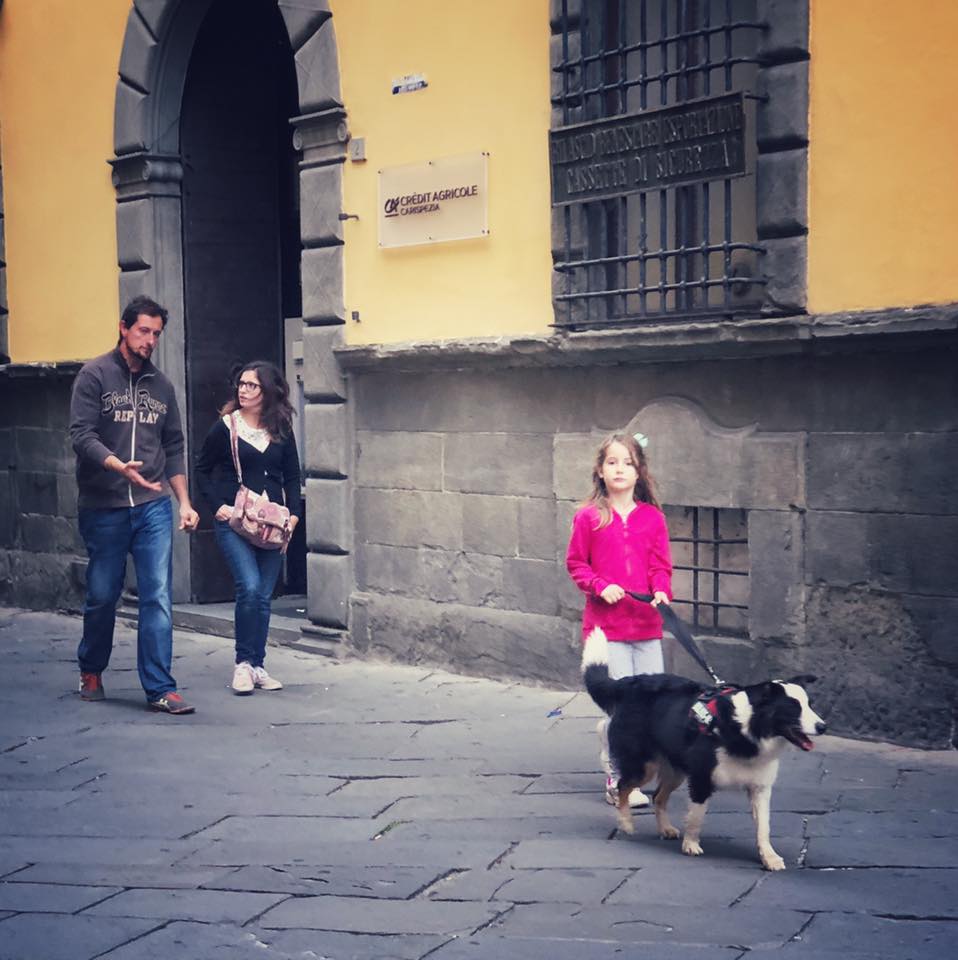
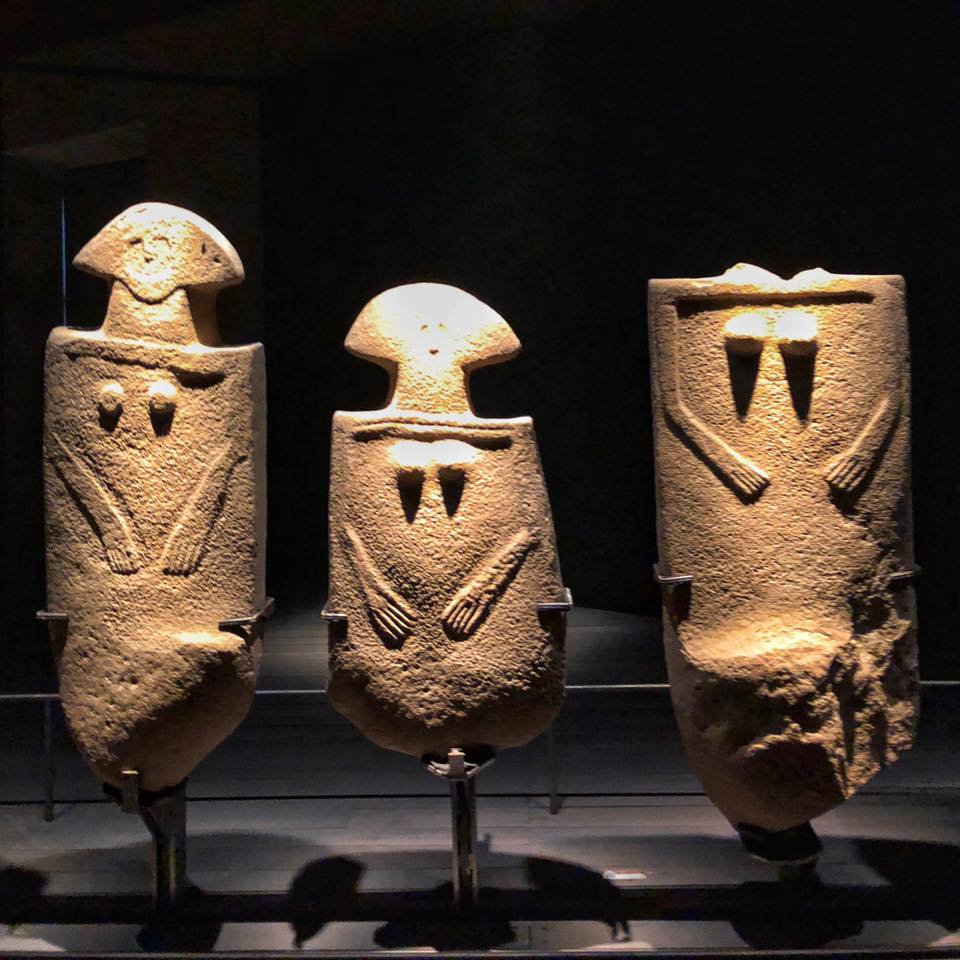

Pontremoli is the northern gateway into Tuscany, first settled around 1,000 B.C. and named Apua during Roman times. It’s a town full of fascinating nooks and crannies. A castle, first built in the Middle Ages, dominates the strategic location. The Castello del Piagnaro houses an affordable hostel for pilgrims and a new and remarkable museum housing up to 6,000-year-old sandstone stele with male and female human forms; dozens of these stylized figures have been found in this area.
Tuscan tip, spotted on the trail today: “Sorridi, la vita è un’avventura.” (Smile, life is an adventure.) True, dat.

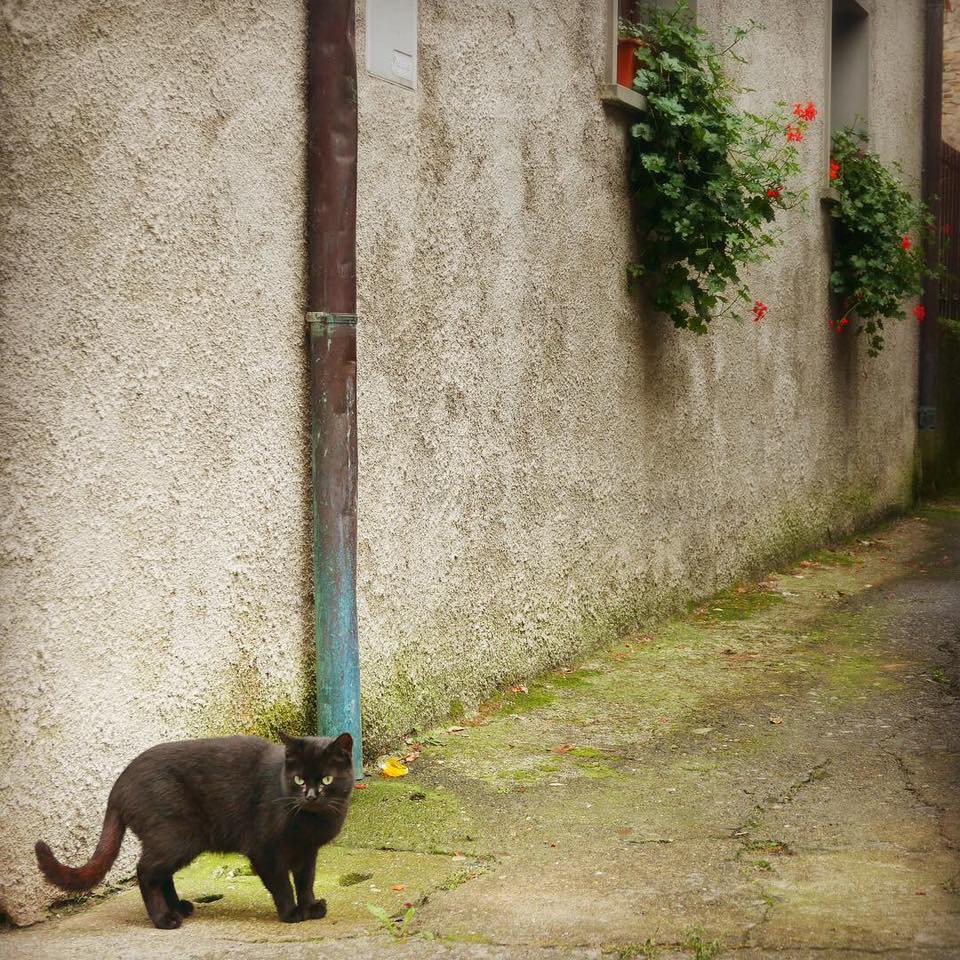
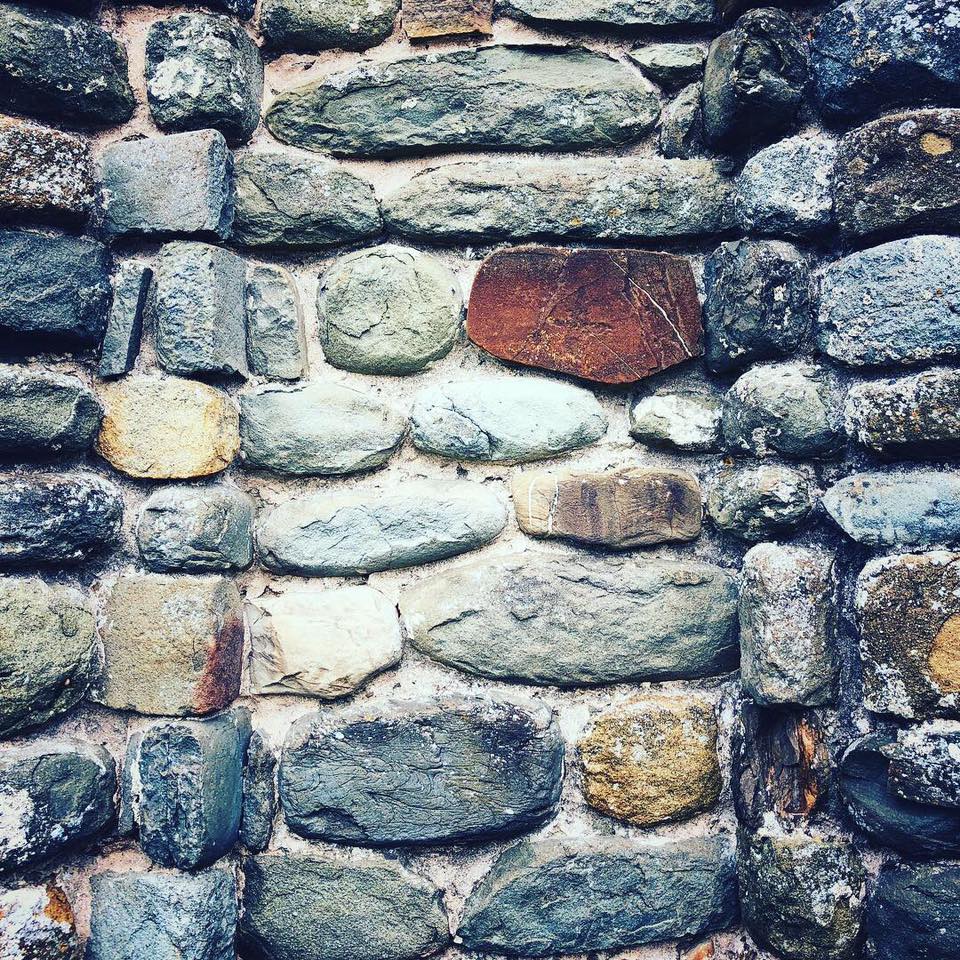
Great neighborhood: The medieval village of Filattiera, in the upper Lunigiana, is the kind of place where residents leave their keys in the front door lock (on purpose!); cats wander freely, and a well-preserved Romanesque church dates back to the 10th century (detail of wall from the Pieve di Sorano).
“In the middle of my life’s journey, I found myself within a forest dark,” reads the opening line of Dante’s epic poem, Divine Comedy. This “selva oscura” might well have been inspired by the section of the Via Francigena we are in today (between Filattiera and Filetto), as the 13th-century Florentine poet was known to have visited these parts. Unlike Dante, I found the woods to be more luminous than infernal; it’s a lovely section of the pilgrim road.
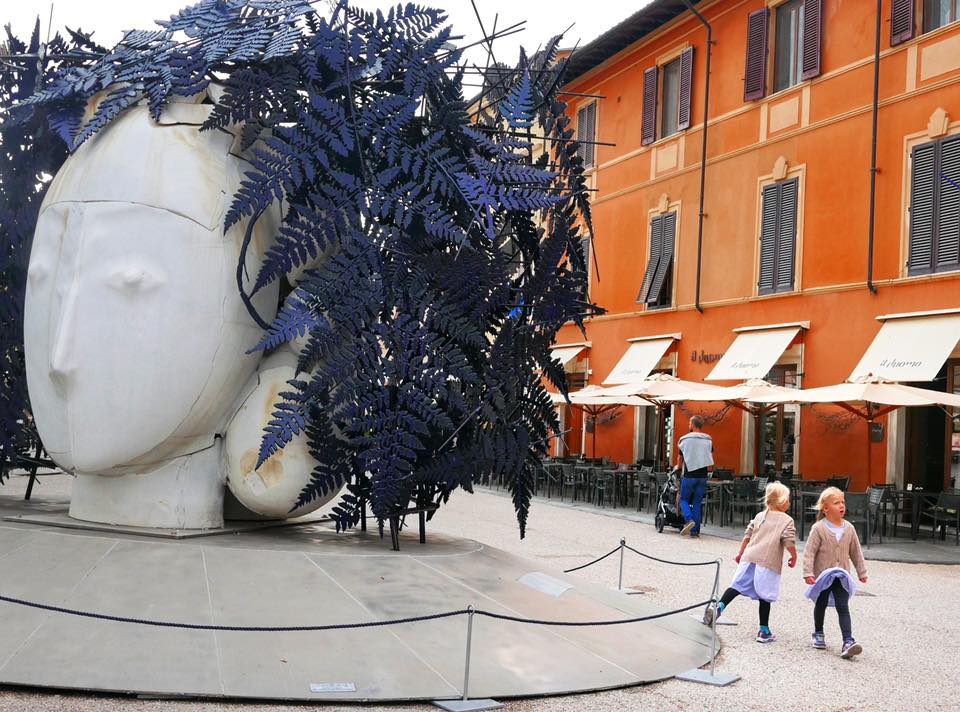
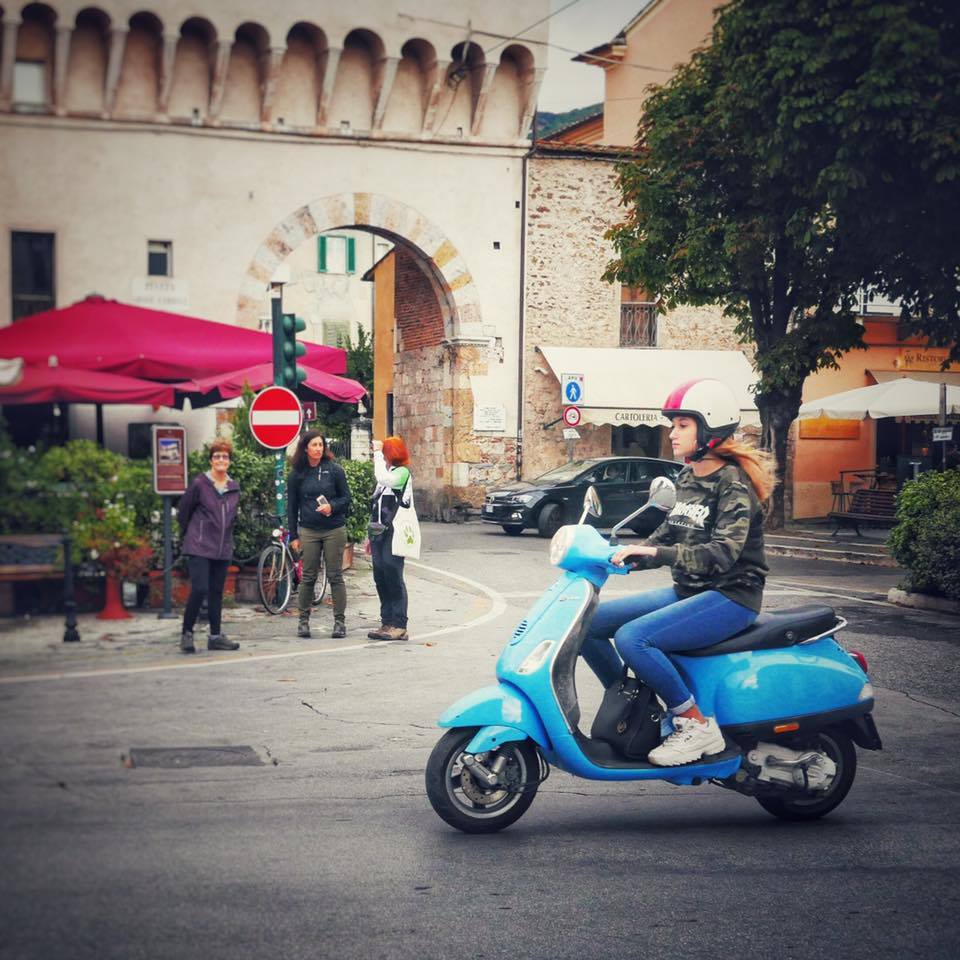

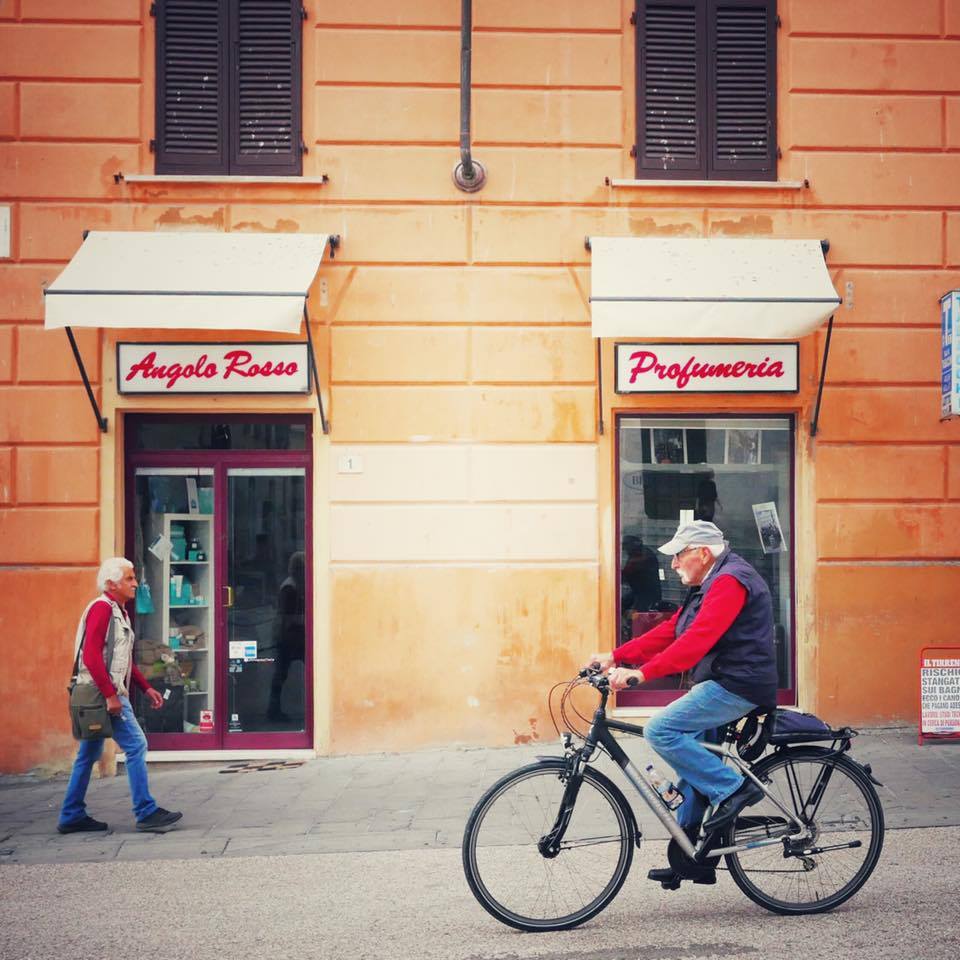
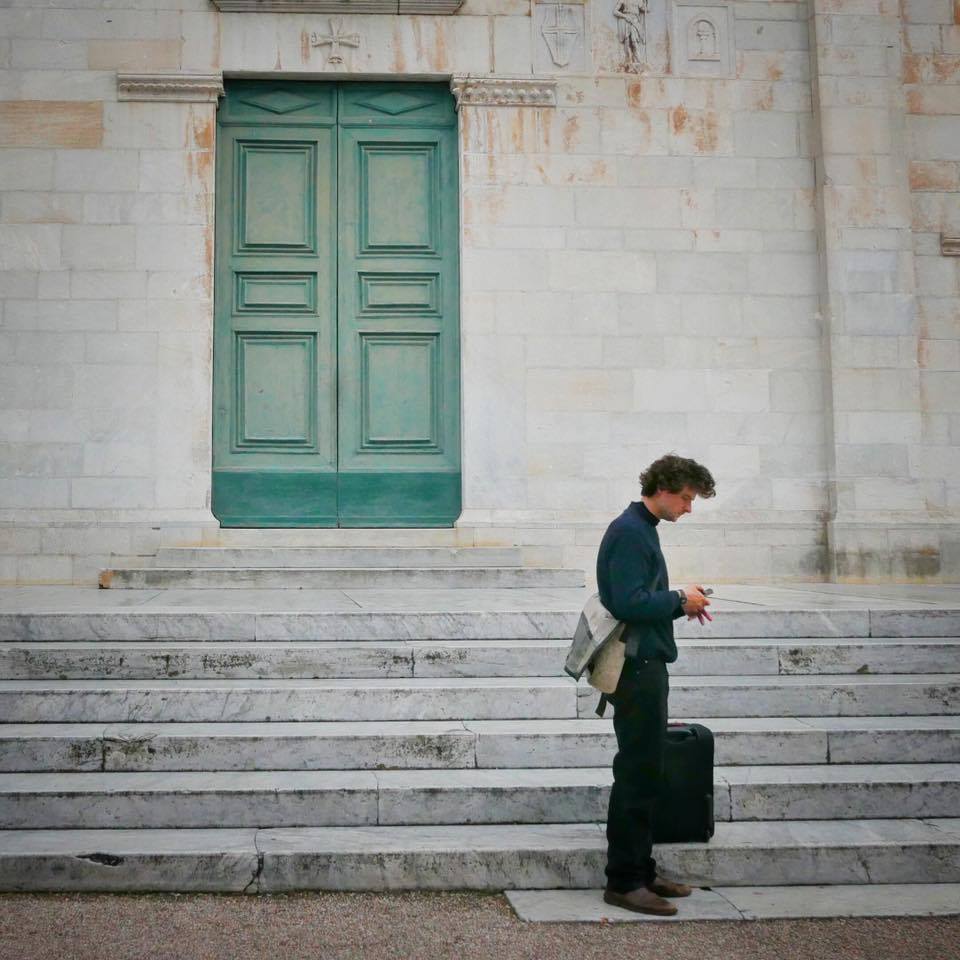
Between the Mediterranean Sea and the foothills of the Apuan Alps in northern Tuscany is a darling of a medieval town called Pietrasanta; and the Via Francigena goes right through it. Its proximity to the marble quarries of Carrara led to the development of art schools and workshops under the Medici government, attracting artists from Michelangelo in the 16th century to Botero in the 20th. The main piazza often hosts large outdoor installations. I love the juxtaposition of contemporary art in a classic setting. I wish we could linger, but we cannot.

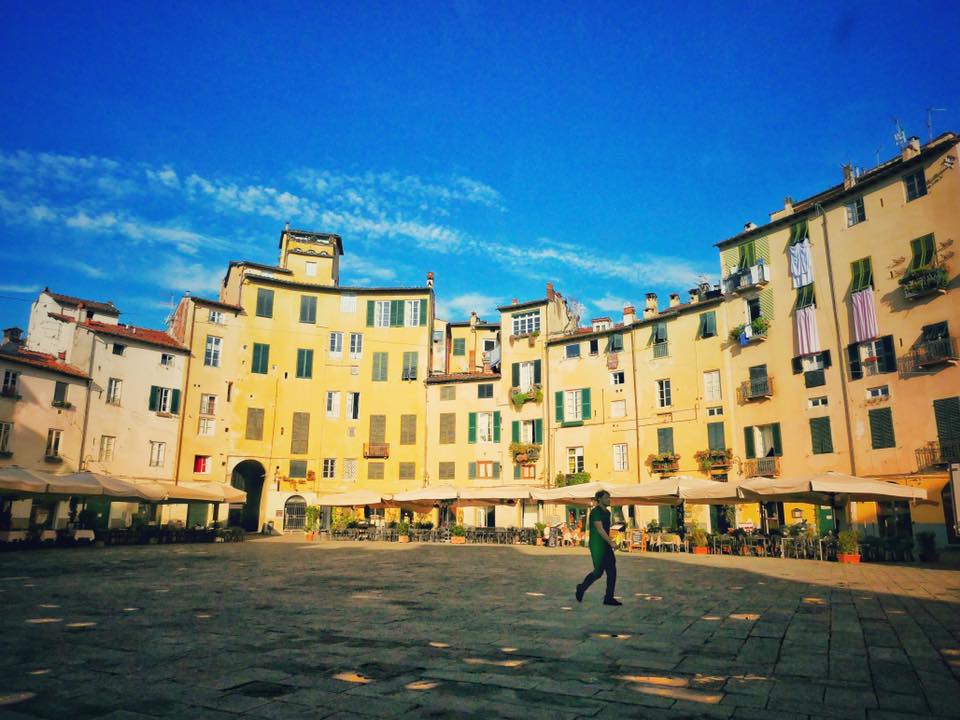

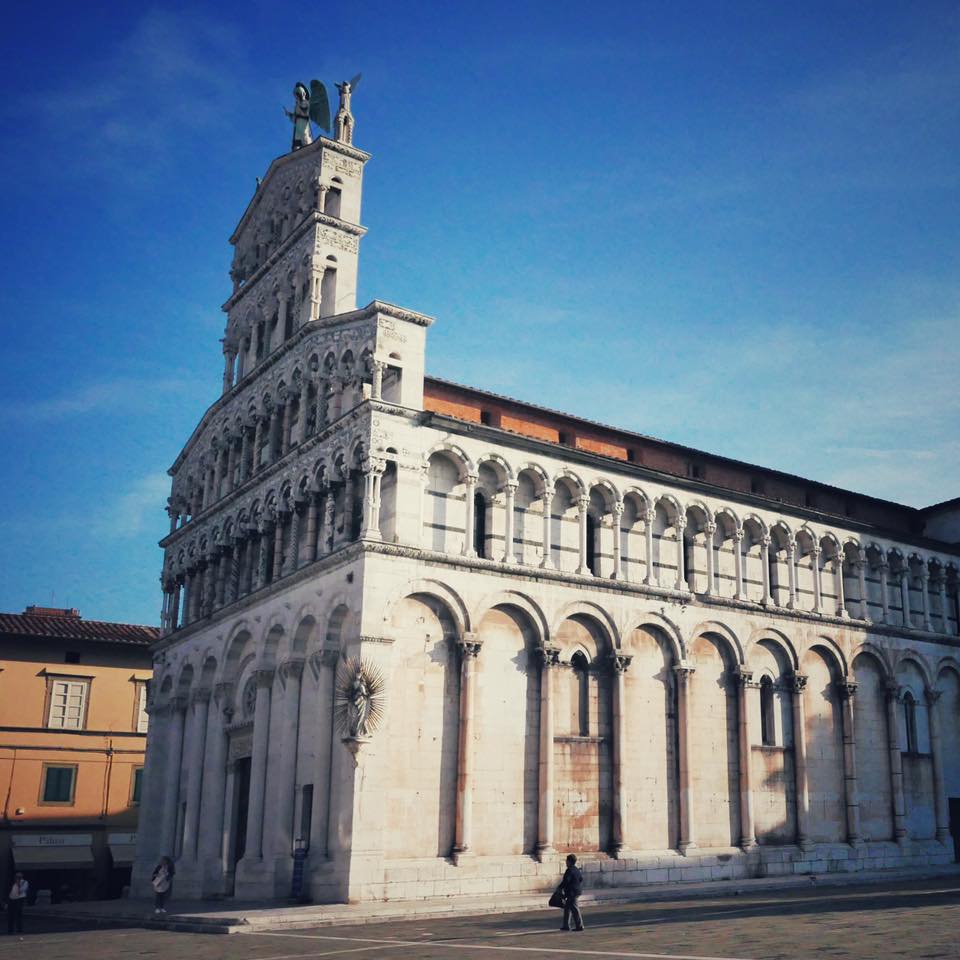
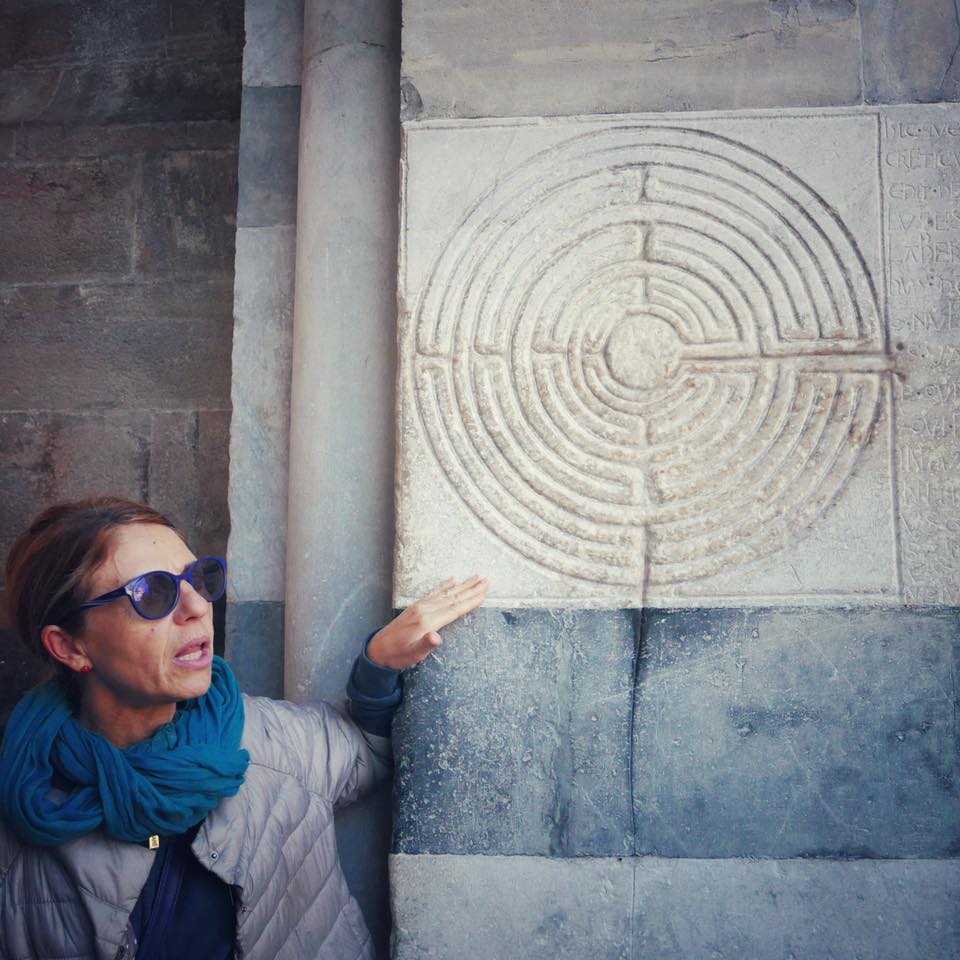
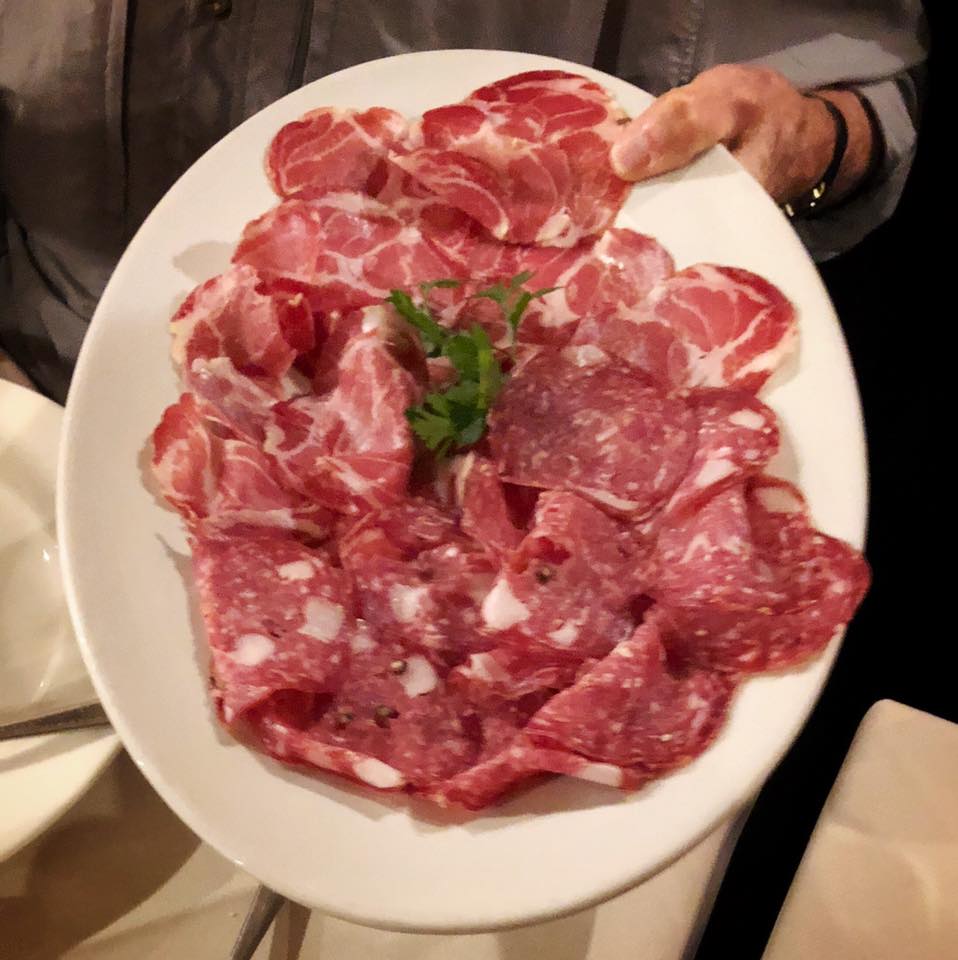
Lucca, in layers: This Renaissance walled city was built atop a Roman town, which itself was built over an Etruscan settlement. Look closely and the structures reveal secrets at every narrow passage and corner. To wit: vestiges of the Roman amphitheater are visible in the walls of the Piazza dell’Anfiteatro, built in an elliptical shape. There’s so much to love here but extra love for the raised fortifications ringing the town are now a park for strollers, joggers, festival goers, and cyclists.


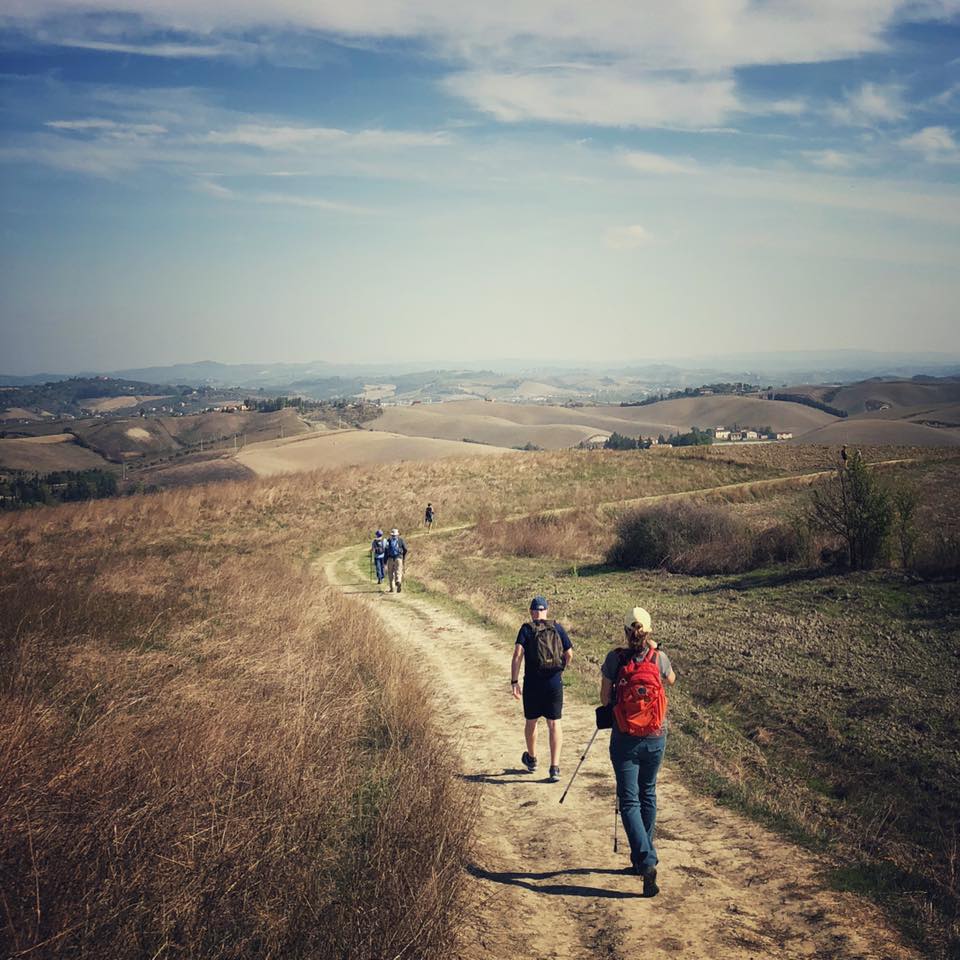

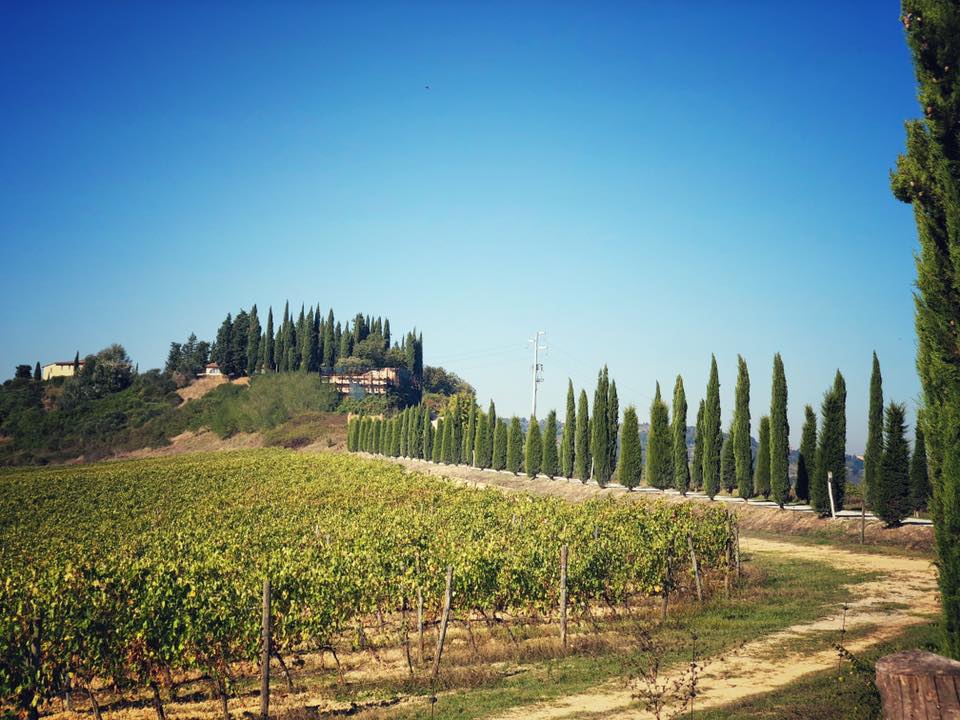
Under the Tuscan sun: The walk from Coiano to Gambassi Terme hits all the iconic high notes—rolling hills marked by vineyards, olive groves, ramrod rows of cypress trees, and palazzos with terracotta roofs. It’s a visual feast, for sure, but the sun feels warm on the skin, the air is scented with sage and rosemary, and do you hear that occasional gunshot? The wild boar hunt has begun.
Pilgrim’s progress: Marcel Descarveaux, 75, of Montreal, Canada, is walking the entire Via Francigena solo, from Canterbury to Rome. He’s eight weeks in, with two more to go. We encountered this gentle pellegrino at a hostel next to the Pieve di Chianni. The small parish church was itself visited by one of the original pilgrims, Sigeric, the Archbishop of Canterbury, who made the journey to Rome in 990, more than a thousand years ago. Marcel holds up his passport of stamps collected along the way. He seems to be a very happy man.
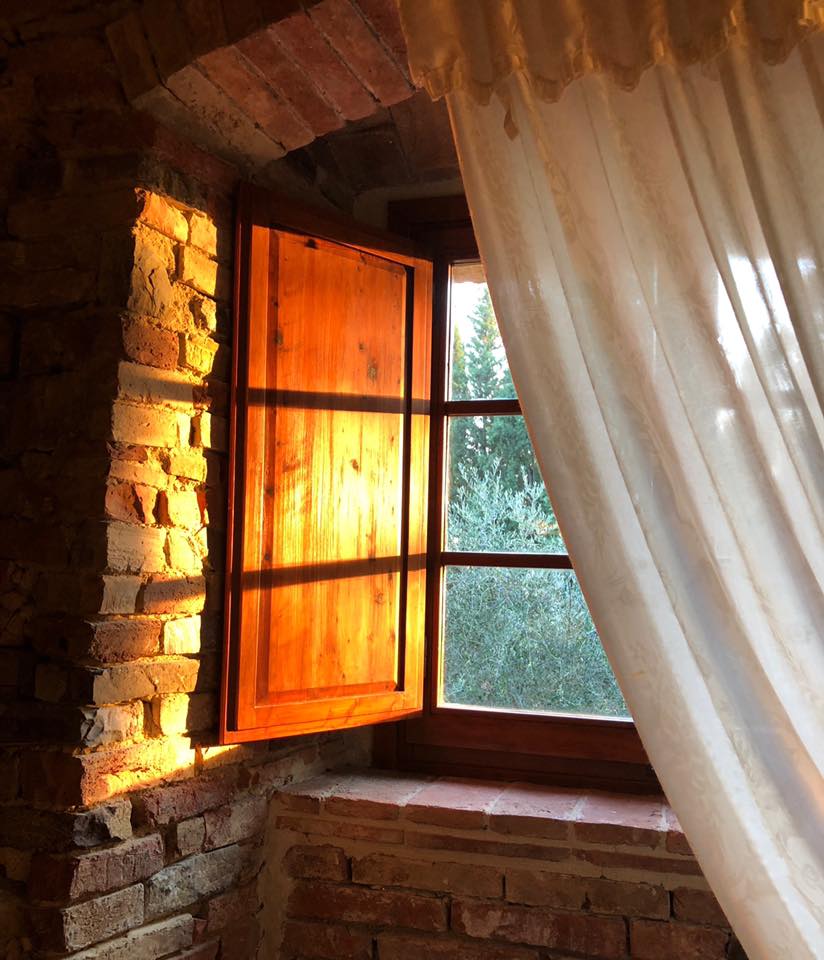
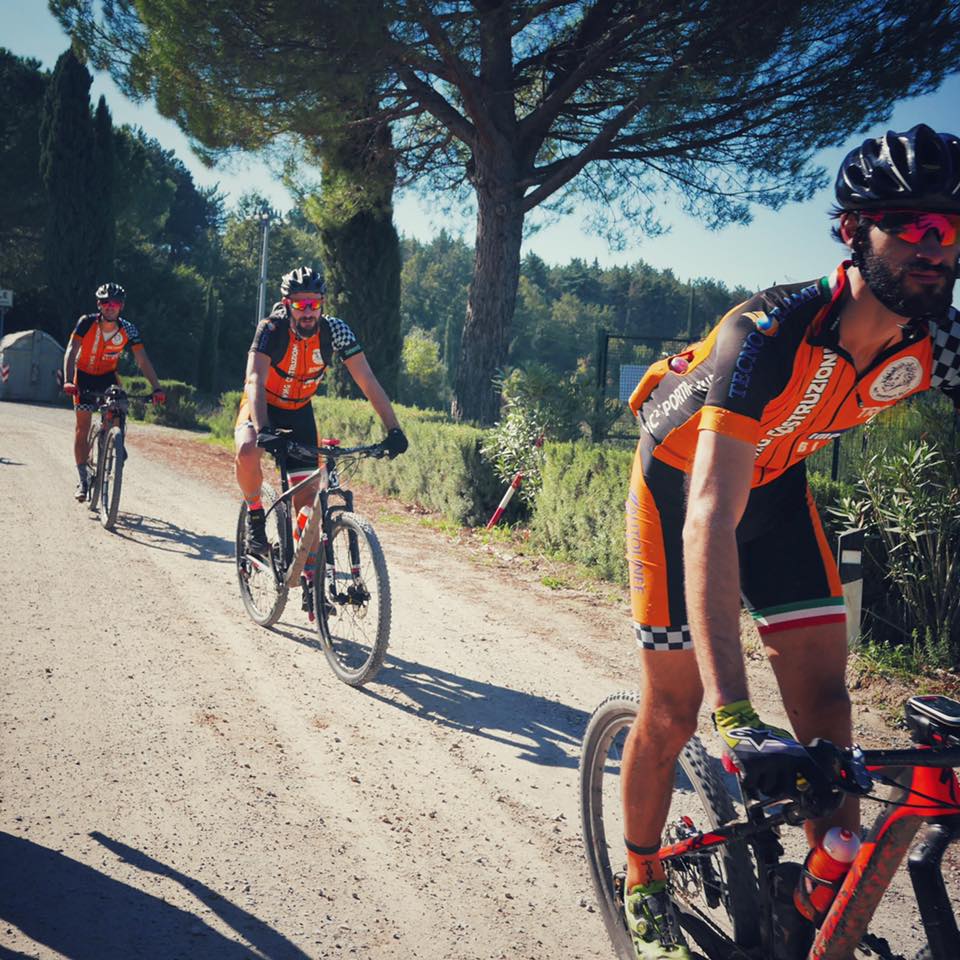
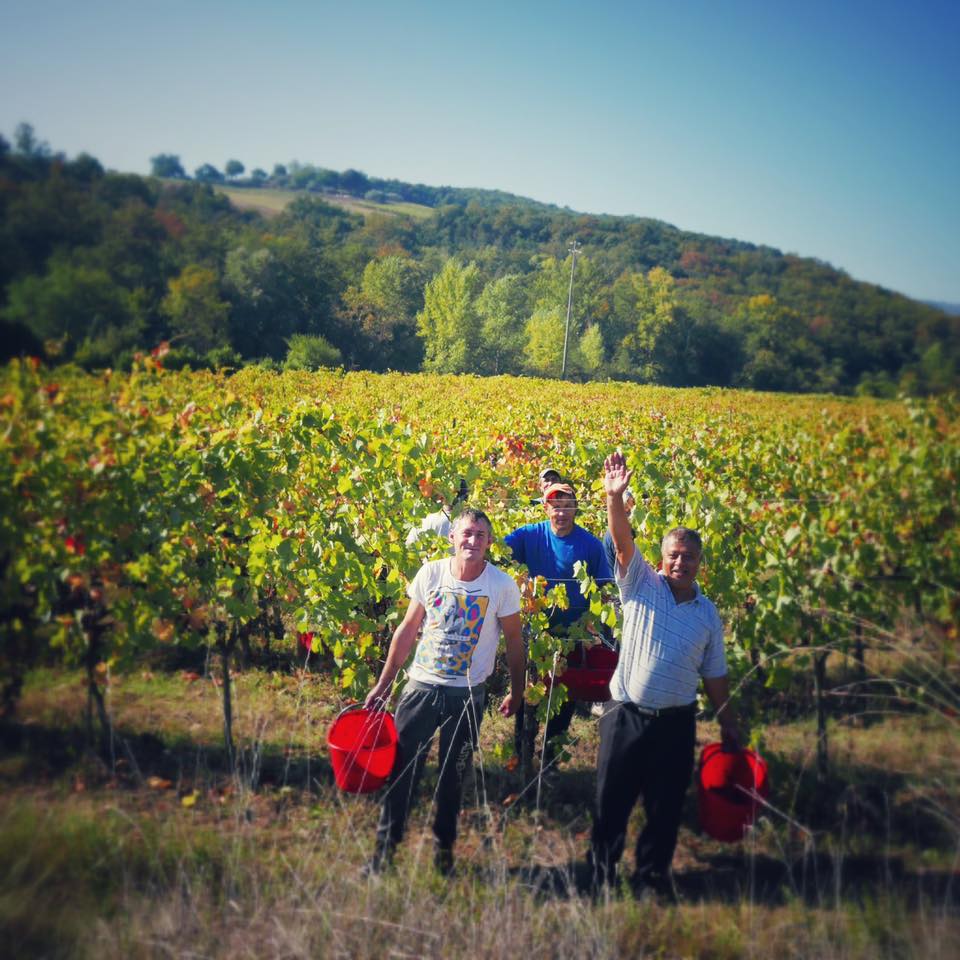

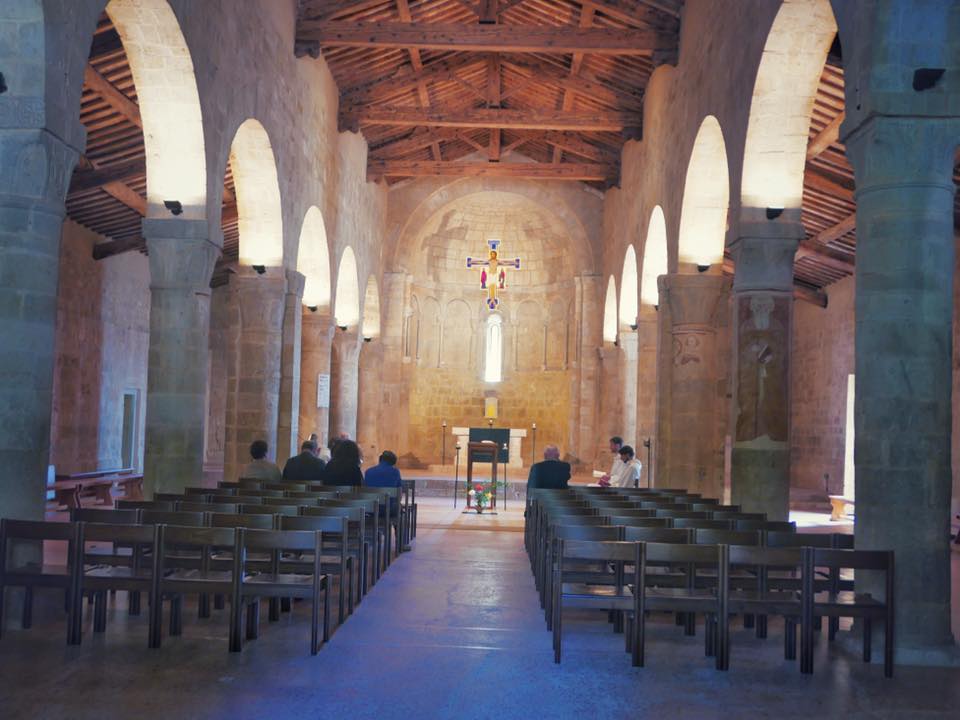
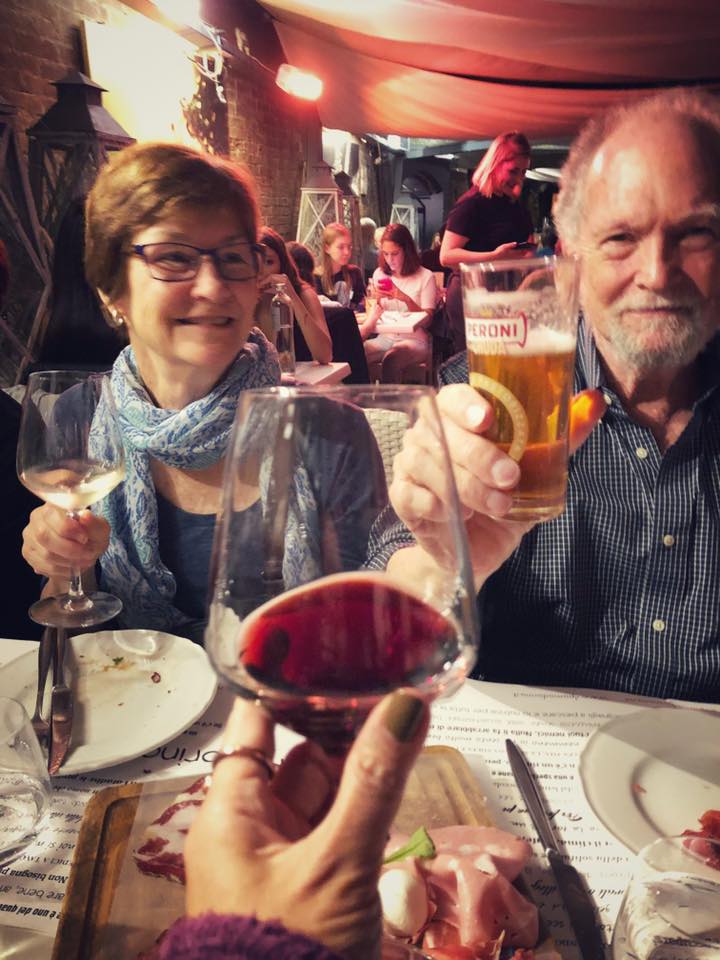
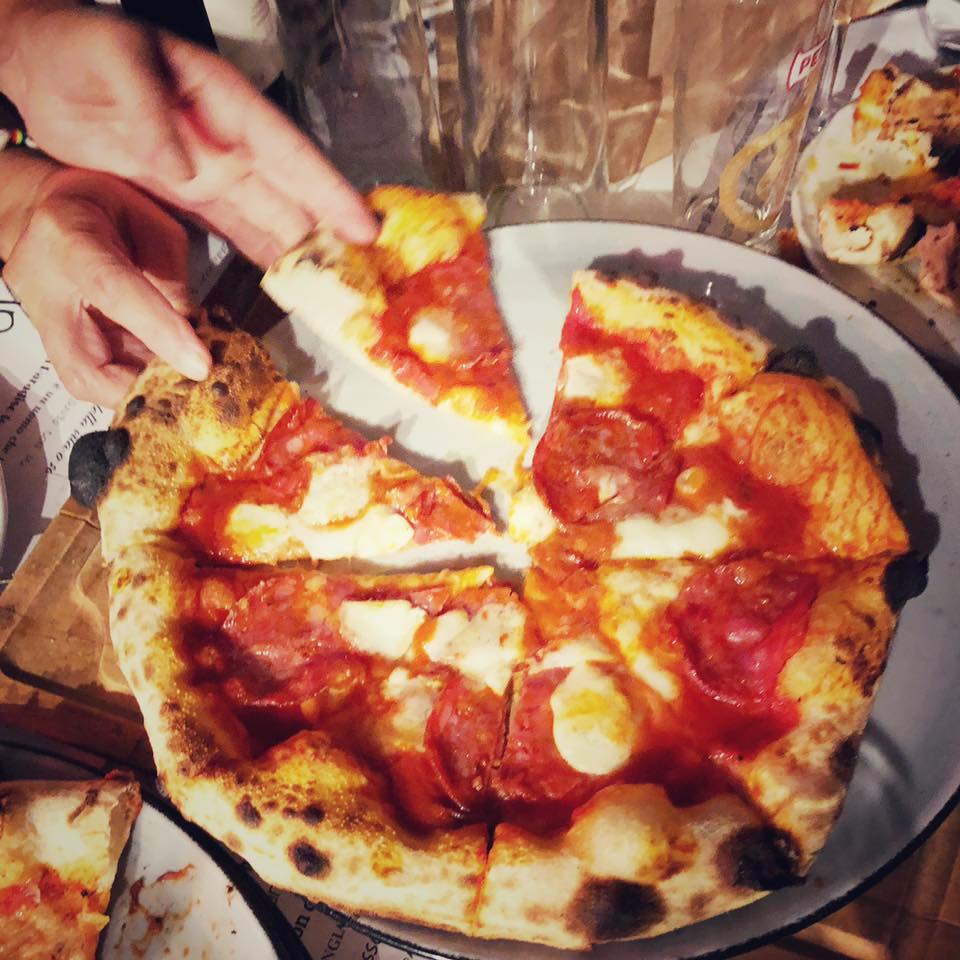
What makes la dolce vita? Is it an open window to let the breeze and sunlight in? Pursuits to engage mind and muscle? Work that satisfies? Friends to grow old with? Spaces that soothe the soul? Mentors to light the way? Travel that inspires? Or perhaps it’s just good pizza. Tuscany has made me think. And what do you say?
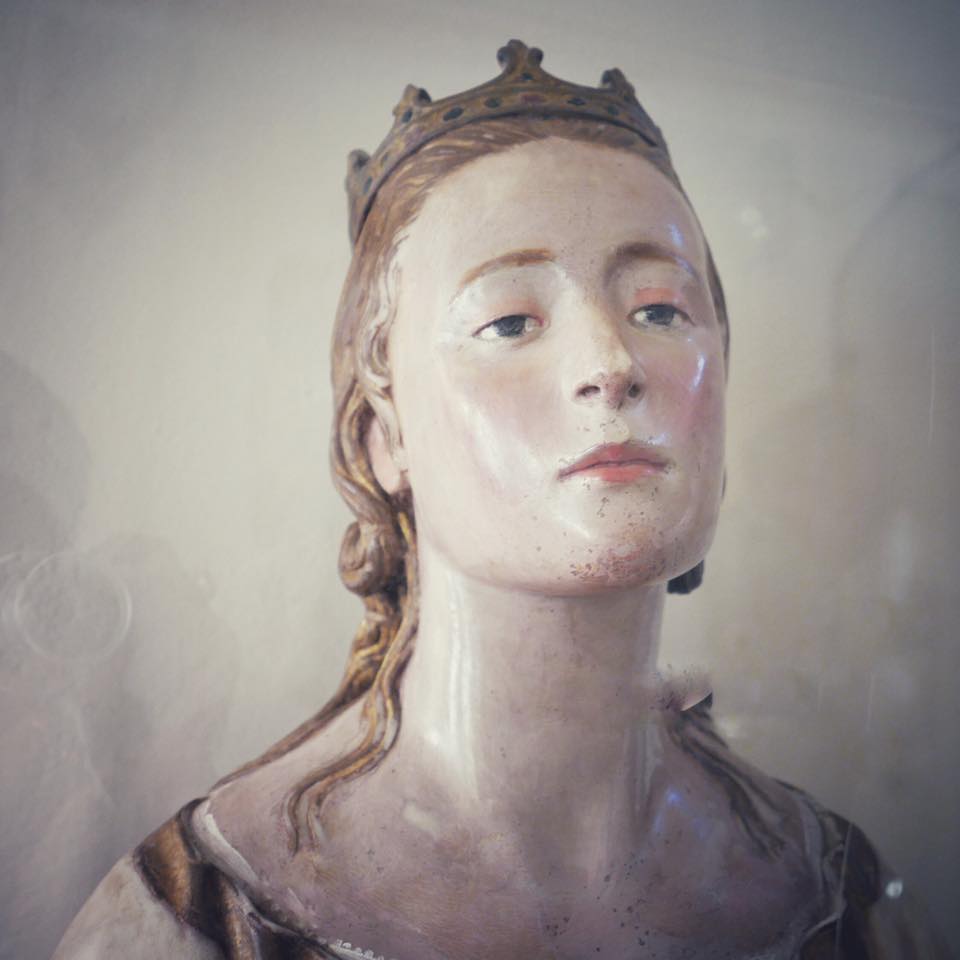

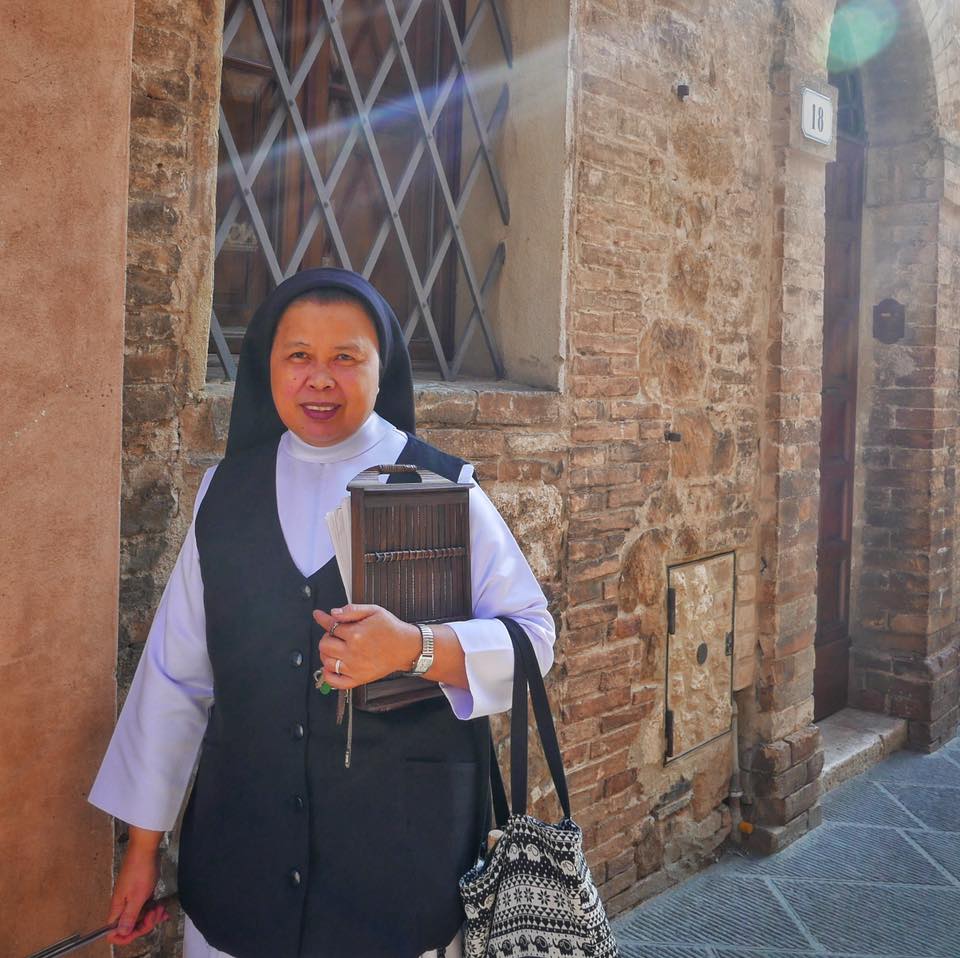

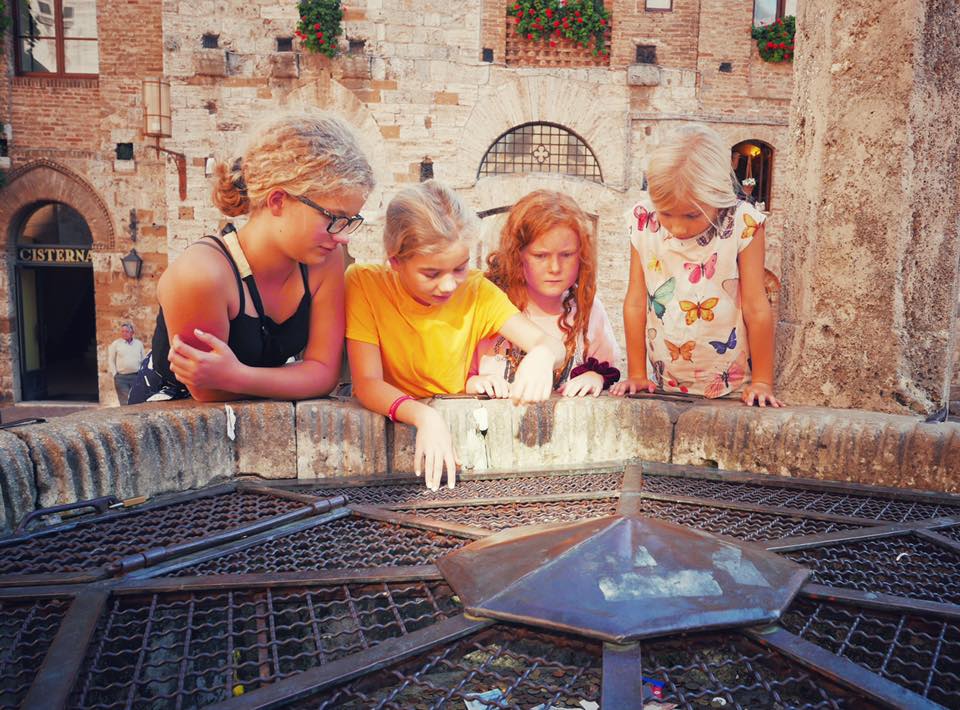
Belle donne, Tuscany.
ATTA friends: While the rest of #ATWS2018 is on their fun days of adventures throughout Tuscany, your friendly ATCF Board of Directors is working hard (and having fun) planning for 2019. Not an Adventure Travel Conservation Fund member yet? Talk to one of us; it’s the coolest group around and a great way to give back to the communities we work in.
Life is challenging; friends are scattered all over the globe; and current events—ugh, I can’t even. So I treasure fleeting moments of insight, connection, and joy. Grateful for the gathering of friends old and new (and in Tuscany, too!) and missing people who couldn’t make it.
Words to live by: It’s more beautiful in the original Italian (so be sure to read it aloud in your best Andrea Bocelli voice), but here’s a translation of a plaque on the wall of a wine- and olive oil-making monastery along the Tuscan portion of the thousand-year-old Via Francigena pilgrim trail.
“Find time for play, it is the secret of eternal youth.
Find time to think, and you will find yourself.
Find time to dream, and hitch your cart to a star.
Find time to read, it is the foundation of wisdom.
Find time for friendship, it is the road to happiness.
Find time to love and be loved, it is the privilege of God.
Find time to help each other, the day is too short for selfishness.
Find time to laugh, it is the music of the soul.
Find time, my brothers, because life is short.”
—Saverio Pollari
Photos © Norie Quintos. The five-day walking tour was arranged through S-Cape Travel.

